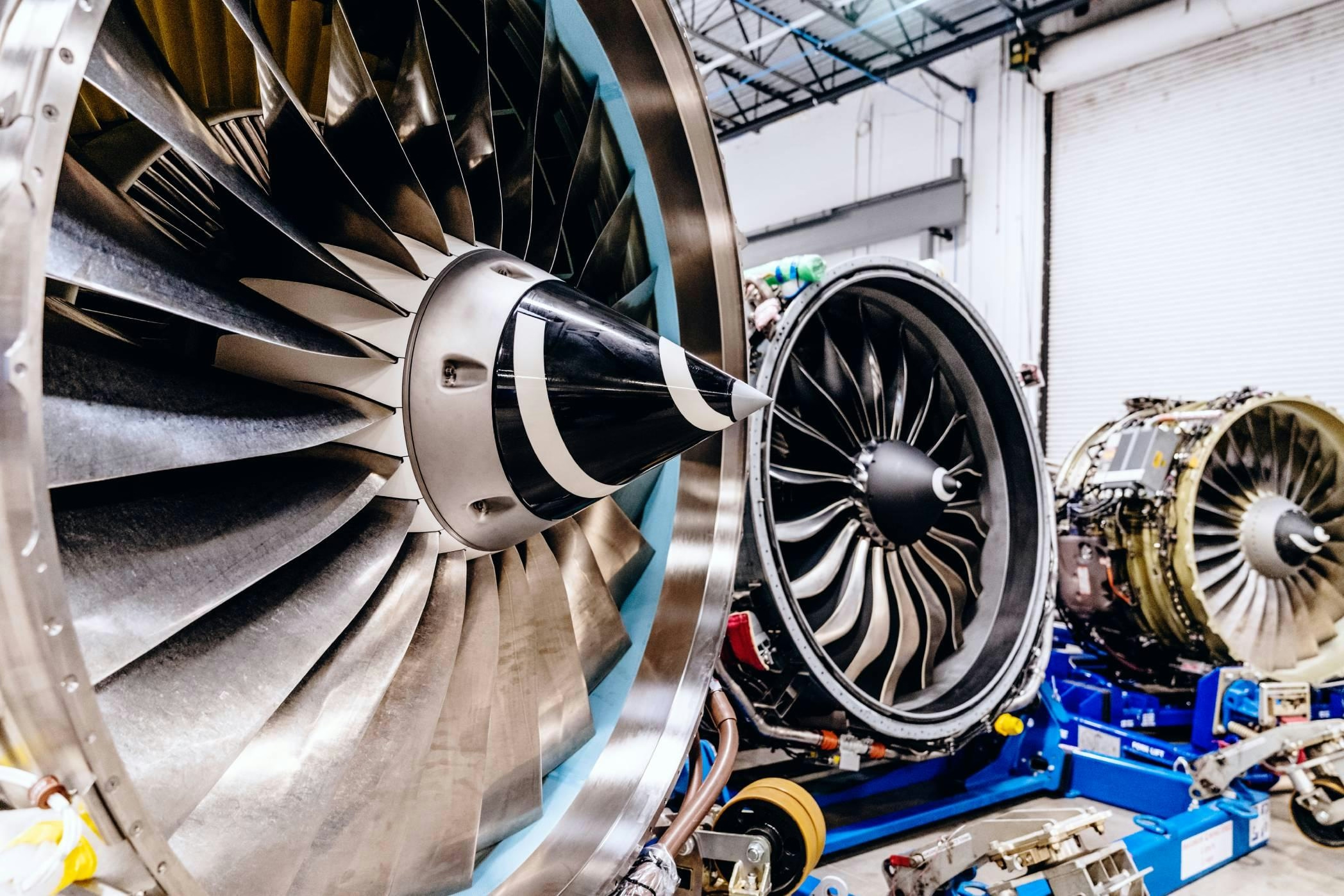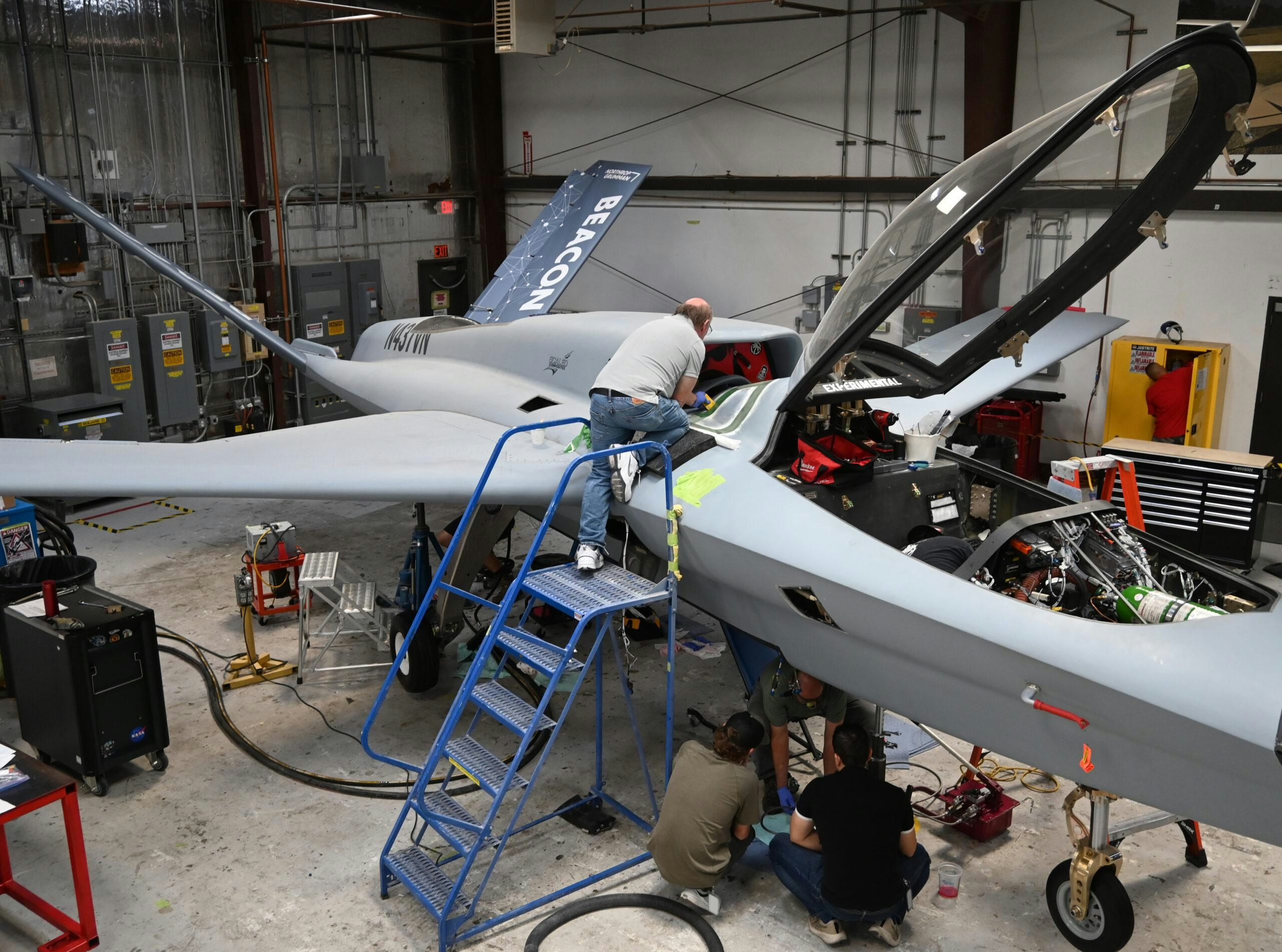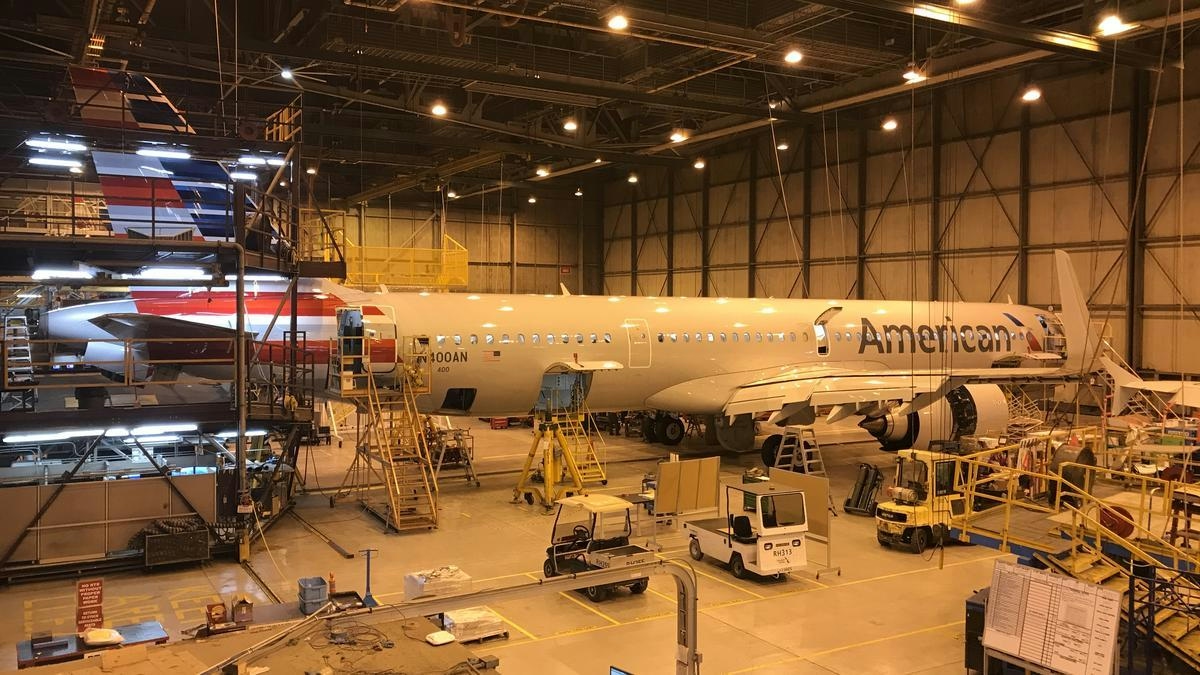
Smarter email, faster business.
Auto-tag, parse, and respond to RFQs, quotes, orders, and more — instantly.
NTSB Reports on Design Changes and Timeline for 737-9 Door Plug
June 27, 2025By ePlane AI
0
0
Boeing 737-9
Door Plug
NTSB Investigation
More news

F-AIR Colombia Expects 25,000 Daily Visitors at 12th International Aeronautics Fair
F-AIR Colombia Anticipates 25,000 Daily Visitors at 12th International Aeronautics Fair
The 12th International Aeronautics and Space Fair (F-AIR Colombia) is scheduled to take place from July 9 to 13, 2025, at José María Córdova International Airport. Organized by the Colombian Aerospace Force with support from the Civil Aviation Authority and regional partners, the event will convene industry leaders, government officials, and aviation enthusiasts from approximately 15 countries. The fair aims to showcase the latest advancements in both civil and military aviation, reinforcing its status as a premier aerospace event in Latin America.
Focus on Innovation and Emerging Technologies
A key highlight of this edition will be the integration of unmanned aerial vehicles, underscored by a dedicated drone show. This emphasis on cutting-edge technology reflects F-AIR’s commitment to presenting the forefront of aerospace innovation. The event will also feature forums addressing investment opportunities in Maintenance, Repair & Overhaul (MRO), a sector that has attracted considerable international interest. Colombia’s growing prominence in engine overhaul and structural maintenance has positioned it as a strategic hub for MRO activities. Major companies, including MRO Holdings, are preparing significant investments, with announcements anticipated during the fair. Airlines such as LATAM and Avianca have been invited to participate, further highlighting the event’s regional importance.
Navigating Global Challenges and Operational Complexities
The 2025 fair takes place amid considerable challenges facing the global aviation sector. Industry analysts forecast robust growth in the fighter jet market through 2030, driven by modernization programs and escalating geopolitical tensions. However, recent funding reductions by the U.S. Air Force—particularly cuts to the JetZero program for fiscal year 2026—may affect related projects and investments worldwide. These developments are expected to intensify competition and prompt strategic realignments among aerospace manufacturers, with the U.S. market continuing to exert significant influence.
Organizers of F-AIR Colombia face complex logistical and security demands, with daily attendance expected to reach up to 25,000 visitors. The event requires meticulous coordination of airport operations, exhibition space allocation, and mobility management within an active commercial airport adjacent to a military base. Security protocols will involve multiple layers of protection and collaboration among various security forces to ensure a safe and seamless experience.
Colonels Andrés Felipe Vargas, Director of F-AIR Colombia, and Juan José López Duque, Director of Operations, highlighted the scale of these challenges in a recent interview. Col. López emphasized the necessity of long-term planning to maintain the fair’s high profile and operational efficiency, noting that space allocation is particularly demanding given the venue’s dual commercial and military functions. Coordination for demonstrations and logistics begins almost immediately after each edition concludes. Col. Vargas added that the airport’s increased activity since the inaugural fair has made managing interruptions more complex, while rising expectations from attendees continue to raise the organizational bar.
As the global aviation industry undergoes transformation and uncertainty, F-AIR Colombia 2025 seeks to position the country as a center for innovation, investment, and regional collaboration in aerospace.

Willis Lease Finance Sells Consultancy Unit to Joint Venture with Mitsui & Co.
Willis Lease Finance Sells Consultancy Unit to Joint Venture with Mitsui & Co.
COCONUT CREEK, Fla., June 30, 2025 — Willis Lease Finance Corporation (NASDAQ: WLFC), a prominent lessor of commercial aircraft engines and provider of global aviation services, has finalized the sale of its consultancy and advisory subsidiary, Bridgend Asset Management Limited (BAML), to its joint venture with Mitsui & Co., Ltd. The joint venture, Willis Mitsui & Co. Engine Support Limited (WMES), will now incorporate BAML under the new name Willis Mitsui & Co. Asset Management Limited (WAML). This integration marks a significant expansion of WMES’s asset management and technical consultancy capabilities.
Strategic Expansion of WMES
The transaction is designed to enhance WMES’s platform by adding technical consultancy and records management services, thereby improving operational efficiency and broadening its presence in aviation asset management. Founded in 2011 and headquartered in Dublin, WMES currently manages approximately $380 million in assets, a figure expected to increase as the joint venture expands its service offerings.
Austin C. Willis, Chief Executive Officer of WLFC, described the deal as a milestone for both Willis Lease Finance and its partnership with Mitsui. He emphasized that the sale represents the first step toward closer collaboration and substantial growth within WMES. Yuichi Nagata, General Manager of the Aerospace Business Division at Mitsui, echoed this sentiment, noting that the transaction deepens the partnership and positions WMES to better meet the evolving demands of the global aviation market. He highlighted the joint venture’s strengthened role as a comprehensive provider of engine-related services.
Implications and Challenges
While the sale allows WLFC to concentrate on its core financial leasing operations, it also introduces challenges related to the integration of the consultancy unit into the joint venture. Ensuring regulatory compliance and managing potential cultural differences between the companies will require careful oversight. Market responses may vary; some investors may welcome WLFC’s sharpened strategic focus, while others might express concerns regarding the financial impact of the divestiture. Furthermore, this move could prompt competitors to enhance or acquire consultancy services, potentially intensifying competition within the sector.
WLFC will maintain a 50% ownership stake in WMES and continue to utilize the joint venture’s expanded capabilities to support its leasing business. The company also plans to pursue additional strategic initiatives aimed at growing its aviation portfolio.
About Willis Lease Finance Corporation
Willis Lease Finance Corporation specializes in leasing large and regional spare commercial aircraft engines, auxiliary power units, and aircraft to airlines, engine manufacturers, and maintenance providers worldwide. Its integrated services encompass engine and aircraft trading, lease pools, asset management, and end-of-life solutions for aviation materials. Through subsidiaries such as Willis Engine Repair Center®, Jet Centre by Willis, and Willis Aviation Services Limited, the company offers engine maintenance, aircraft disassembly, storage, and airport services. Additionally, Willis Sustainable Fuels is dedicated to developing projects that support the decarbonization of aviation.
*Forward-looking statements in this release involve risks and uncertainties. Actual results may differ materially from expectations.*

Why Joby Aviation Stock Is Soaring Today
Why Joby Aviation Stock Is Soaring Today
Shares of Joby Aviation (NYSE: JOBY) surged by 11.6% on Monday, significantly outperforming broader market indices, with the S&P 500 and Nasdaq Composite rising only 0.4% and 0.5%, respectively. This sharp increase reflects a series of positive developments for the electric vertical takeoff and landing (eVTOL) aircraft manufacturer, particularly in the Middle East and the United States.
Milestone Achieved in Dubai
Joby Aviation recently completed a series of wingborne test flights with its eVTOL air taxi in Dubai, marking the first such flights in the United Arab Emirates. This milestone represents a crucial step toward the company’s goal of launching commercial air taxi services in the region. The tests were conducted in collaboration with Dubai’s Roads and Transport Authority (RTA), the Dubai Civil Aviation Authority, and the UAE’s General Civil Aviation Authority. Earlier this year, Joby secured an exclusive six-year agreement with the RTA and Skyports to operate air taxis in Dubai.
Commercial operations in Dubai are anticipated to commence in 2026, positioning Joby as a leading player in the global advanced air mobility market. The company’s exclusive rights to the Dubai market provide a significant competitive edge amid growing global interest in urban air mobility solutions.
Strategic Partnerships and U.S. Progress
Investor sentiment has also been bolstered by Joby’s recent initiatives in the United States. The company conducted a public demonstration of its technology in New York City, showcasing its capabilities to regulators and the public alike. Additionally, Joby received a new order aimed at enhancing U.S. defenses against drone threats, further underscoring its technological prowess. Its strategic partnership with Delta Air Lines is viewed as a critical factor in reducing operational risks and accelerating market entry, particularly within the U.S.
Competitive Environment and Financial Considerations
Despite Joby’s apparent leadership in the eVTOL sector, the competitive landscape remains highly dynamic. Rival Archer Aviation recently announced an $850 million stock offering, highlighting both the capital-intensive nature of the industry and the increasing investor appetite for advanced air mobility ventures.
Joby’s strong balance sheet offers some financial flexibility as it transitions from pre-revenue status to commercial operations. Nonetheless, analysts warn that the company may need to raise additional capital to scale production, which could result in shareholder dilution. Market reactions are mixed; some analysts have downgraded Joby due to concerns over near-term growth prospects, while others emphasize the long-term potential of its electric air taxi service.
Outlook
Joby Aviation aims to launch commercial operations as early as next year, with Dubai services expected to begin in 2026. The company’s recent achievements, strategic alliances, and exclusive market agreements have reinforced its standing in the rapidly evolving eVTOL industry. However, investors should remain cautious of the challenges associated with scaling production and the intensifying competition within the sector.

Hanwha Aerospace signs $459 million contract for KF-21 jet engines
Hanwha Aerospace Secures $459 Million Contract for KF-21 Jet Engines
Hanwha Aerospace has finalized a follow-up contract worth 623.2 billion won ($459.3 million) with South Korea’s Defense Acquisition Program Administration (DAPA) to supply engines for the KF-21 supersonic fighter jets. This agreement, announced on Thursday, supplements a previous contract valued at 556.2 billion won signed earlier in 2023, bringing the total value of Hanwha’s KF-21 engine contracts to approximately 1.18 trillion won.
Contract Details and Production Plans
Under the terms of the new deal, Hanwha Aerospace is tasked with delivering 80 F414 engines for the initial mass production batch of KF-21 jets by December 2028. The contract also encompasses comprehensive logistics support, including maintenance parts, technical manuals, and on-site technical assistance to ensure operational readiness and sustainment.
Hanwha Aerospace has been a pivotal player in South Korea’s military aviation sector since 1979, having produced over 10,000 engines for aircraft such as the KF-5, KF-16, and F-15K. To enhance its manufacturing capabilities, the company has invested 40 billion won in establishing a smart factory dedicated to jet engine production. Hanwha emphasized its commitment to leveraging advanced aviation engine technology to guarantee timely delivery and to contribute to the development of next-generation propulsion systems for national defense.
Strategic Importance and Regional Implications
The KF-21 program, initiated in 2015, aims to replace South Korea’s aging fleet of F-4 and F-5 fighters and represents a critical component of the country’s air force modernization efforts. Deployment of the new aircraft is scheduled to commence by 2028. However, the program faces challenges related to the integration of advanced technologies, which could potentially cause production delays. The scale and complexity of the project require meticulous management to adhere to delivery timelines.
Despite these challenges, the KF-21 has attracted growing market interest as a cost-effective alternative to Western fighter jets. This has prompted intensified competition from foreign manufacturers seeking to enhance their own offerings in response to the KF-21’s emergence. Regionally, Indonesia has reaffirmed its commitment to the KF-21 program, even as it moderates expectations for its indigenous KAAN fighter project. This development suggests a shift in regional defense priorities, with countries increasingly viewing the KF-21 as a viable and strategic option.
As Hanwha Aerospace advances its role in the KF-21 initiative, the company’s continued investments and technological expertise are poised to play a significant role in shaping the future of South Korea’s defense industry and its standing in the global military aviation market.

Model 437 Integrated into Beacon Autonomous Testbed Ecosystem
Model 437 Integrated into Beacon Autonomous Testbed Ecosystem
Scaled Composites has announced a major milestone in its collaboration with Northrop Grumman through the integration of the Model 437 Vanguard aircraft into Northrop’s Beacon autonomous testbed ecosystem. This partnership is designed to accelerate the development and validation of autonomous mission software by offering third-party developers an operationally relevant and fully integrated testing environment.
Rapid Development and Digital Engineering
The Model 437 completed its maiden flight on August 29, 2024, at the Mojave Air and Space Port in California, marking a significant step in its role as an airborne test platform for the Beacon program. The aircraft’s development timeline was notably swift, moving from detailed design to first flight in just 21 months. This rapid progress was made possible by Northrop Grumman’s “Digital Pathfinder” ecosystem, a digital engineering framework that employs digital twins to visualize and test technical modifications. This approach, previously utilized in the development of the B-21 Raider stealth bomber, has proven effective in reducing both development time and lifecycle costs.
Northrop Grumman characterizes Beacon as a “next-generation testbed ecosystem” aimed at enabling aerospace companies and autonomous flight software developers to deliver new mission capabilities within environments that closely replicate real-world conditions. The Model 437’s recent appearance in a new Beacon paint scheme visually underscores its central role in this initiative.
Collaborative Innovation and Manufacturing Precision
Following the Digital Pathfinder demonstration earlier in 2024, Scaled Composites undertook extensive modifications to the Model 437 to facilitate its integration into the Beacon ecosystem. The collaboration divided responsibilities, with Northrop Grumman focusing on the design and manufacturing of the wings, while Scaled Composites managed the rapid design, fabrication, and testing of the overall aircraft platform. The digital engineering process yielded remarkable efficiency, with less than 1% of the wing design requiring rework—significantly below the industry average of 15 to 20 percent—and project delays limited to under 2 percent.
A notable innovation in this process is the use of determinate assembly, which ensures that parts arrive perfectly aligned and ready for immediate assembly, thereby minimizing costly errors. Northrop Grumman highlights that precise, digitally based tooling designs optimize manufacturing workflows before physical production begins, enabling the creation of more complex and creative designs that traditional manufacturing methods cannot easily accommodate.
Challenges and Industry Response
Despite these technological advancements, integrating the Model 437 into the Beacon ecosystem presents several challenges. Ensuring real-time conflict detection and resolution within digital design tools remains a critical priority, alongside addressing safety concerns inherent in autonomous vehicle navigation. Furthermore, broader adoption of autonomous technologies, particularly in sectors such as agriculture, continues to face obstacles including high costs and limited user familiarity.
Market reactions to the Beacon initiative have been mixed, with some skepticism regarding the reliability and safety of autonomous systems. Competitors are responding by advancing their own innovations, focusing on enhanced assisted driving technologies and strengthening automotive cybersecurity measures to mitigate emerging risks.
Greg Morris, president of Scaled Composites, emphasized the company’s agility in meeting demanding timelines: “Modifying the Model 437 on such a short timeline for the Beacon autonomy initiative reflects Scaled’s ability to design, build, test—and in this case, modify—rapidly and effectively.”
As the Beacon program progresses, its success will hinge not only on continued technological innovation but also on effectively addressing industry concerns and demonstrating the reliability and safety of autonomous flight systems in operational environments.

Joby Aviation Shares Climb Following Successful Dubai Air Taxi Tests
Joby Aviation Shares Climb Following Successful Dubai Air Taxi Tests
Successful Demonstration Flights Boost Investor Confidence
Joby Aviation, Inc., a prominent developer of electric air taxis, experienced a notable rise in its share price after completing successful demonstration flights in Dubai. The company is developing an all-electric, vertical take-off and landing (eVTOL) aircraft capable of carrying a pilot and four passengers at speeds reaching 200 miles per hour, with an operational range of approximately 100 miles. Joby’s business model includes manufacturing, owning, and operating its fleet, targeting both government clients—such as the United States Air Force—and individual consumers through an app-based aerial ridesharing platform.
The recent tests in Dubai have invigorated investor optimism, reflecting confidence in Joby’s technological advancements and strategic collaborations. Integral to its operations is the Global Electric Aviation Charging System, designed to facilitate the efficient charging of electric aircraft. The company’s engineering and manufacturing hubs are located in San Carlos and Marina, California, underscoring its commitment to maintaining a strong domestic production base.
Industry Challenges and Competitive Landscape
Despite the positive momentum generated by the Dubai demonstrations, Joby faces several challenges that could affect the timeline for commercial deployment. Regulatory approval processes remain complex and uncertain, while technological hurdles continue to demand significant innovation and investment. The air taxi sector is becoming increasingly competitive, with U.S. rivals such as Archer Aviation expanding their market presence. At the same time, recent financial difficulties among European competitors may signal a shift in industry leadership toward U.S.-based firms.
As the urban air mobility market continues to develop, Joby’s successful demonstration flights and growing investor confidence position the company as a key contender in the evolving landscape of electric air transportation.

Ahmedabad Crash: Right Engine Recovered from Under Concrete Water Tank; Both Engines Removed
Ahmedabad Crash: Both Engines Recovered from Under Concrete Water Tank as Investigation Advances
Days after the Air India aircraft crashed into the B J Medical College hostel mess on June 12, authorities have successfully recovered the right engine, which had been buried beneath a concrete water tank. Over the weekend, special heavy-duty cranes with a lifting capacity of 300 tonnes were deployed to remove the reinforced concrete tank, which had been displaced by more than 20 feet during the crash. This operation allowed investigators to extract the right engine trapped underneath. The left engine, which was found lying on the ground nearby, was also removed and transported on the same day.
A senior government official confirmed that both engines were taken to the GUJSAIL (Gujarat State Aviation Infrastructure Company Limited) hangar located within the airport premises. The rear section of the aircraft, which had been lodged in the hostel mess building, had already been carefully extracted and moved to the same secure location.
Progress in Investigation and Debris Removal
The recovery of the engines represents a significant milestone in the ongoing investigation led by the Aircraft Accident Investigation Bureau (AAIB). The bureau has been working in close coordination with the Ahmedabad Municipal Corporation and City Police to transfer debris to a secure site at the airport. With the engines—among the largest remaining components—now relocated, officials anticipate that the removal of the remaining wreckage will be completed within the next two days.
The investigation has also been aided by the recovery of the aircraft’s black box, which includes both the flight data recorder and cockpit voice recorder. These devices are providing critical data to reconstruct the sequence of events leading up to the crash, which tragically claimed the lives of 241 passengers and crew, as well as several individuals on the ground. Experts will conduct detailed analyses of the recovered engines to evaluate their condition and performance at the time of the accident.
Technical Examination and Industry Response
The right engine’s extraction was particularly challenging due to its position beneath the massive water tank, which contained approximately 5,000 litres of reinforced cement concrete (RCC) and weighed around five tonnes. The operation, carried out on Saturday, took nearly a full day to complete. Officials awaited clearance from GE Aerospace, which is conducting a thorough examination of both engines.
Air India CEO Campbell Wilson stated last week that the aircraft had been well-maintained, with its last major inspection conducted in June 2023 and the next scheduled for December 2025. The right engine had undergone an overhaul in March 2025, while the left engine was inspected in April 2025, with no reported issues prior to the ill-fated flight.
The crash has elicited significant reactions across the aviation sector, with airlines and regulatory authorities closely monitoring the investigation’s progress. Industry competitors are expected to review and strengthen safety protocols and operational procedures in response, aiming to prevent similar tragedies. The AAIB’s ongoing analysis of the black box data and the recovered engines is anticipated to play a crucial role in informing these enhanced safety measures.

Dubai to Launch Air Taxi Service Soon
Dubai to Launch Air Taxi Service Soon
Joby Aviation’s Milestone Delivery
Joby Aviation, a leading company in the electric vertical takeoff and landing (eVTOL) sector, has delivered its first production aircraft to Dubai, marking a pivotal advancement toward the city’s inaugural commercial air taxi service, expected to commence by early 2026. This delivery represents a significant achievement for Joby and underscores the rapid development of the emerging air taxi industry.
Strategic Partnership and Operational Plans
Dubai has shown a strong commitment to pioneering advanced air mobility solutions. Last year, at the World Governments Summit, the city signed a six-year exclusive operating agreement with Joby Aviation. This partnership provides Joby with both regulatory and financial support from Dubai’s Road and Transport Authority (RTA), establishing the company as the sole operator of the city’s air taxi market throughout the agreement’s duration. Initial operations will be launched from four designated vertiports, including prominent locations such as Dubai International Airport and Palm Jumeirah.
Challenges and Market Outlook
Despite the promising outlook, the project faces several challenges. Ensuring regulatory compliance, meeting rigorous safety standards, and achieving seamless technological integration will be essential as Dubai moves forward with this innovative mode of transportation. Market reception is expected to be cautious initially, with some skepticism from consumers and investors concerning the reliability and safety of air taxis. Nonetheless, industry experts predict that public confidence and enthusiasm will increase as the service proves its operational effectiveness and safety record.
Competitive Dynamics and Industry Progress
While Joby’s exclusive agreement provides a competitive advantage in Dubai, other regional and international companies, such as Archer Aviation, are actively expanding their own eVTOL air taxi initiatives. This growing competition is likely to drive further innovation and development within the Middle East’s advanced air mobility sector.
Concurrently, Joby is advancing its efforts in the United States, preparing to enter the final testing phase mandated by the Federal Aviation Administration (FAA), known as Type Inspection Authorization (TIA). This phase represents the last regulatory hurdle before commercial operations can begin. Paul Sciarra, chair of Joby’s board of directors, expressed optimism about the company’s trajectory, highlighting that regulatory progress and operational milestones are shifting public perception from skepticism to anticipation regarding the arrival of air taxis.
As Dubai readies itself to introduce air taxis into its urban landscape, the city is positioning itself at the forefront of a transportation revolution that could redefine urban mobility and serve as a model for cities around the world.

American Airlines Airbus A321 Damaged in Denver Tug Collision
American Airlines Airbus A321 Damaged in Denver Tug Collision
An American Airlines Airbus A321, registered as N578UW, sustained damage following a collision with a tug at Denver International Airport (DEN) shortly before its scheduled departure. The aircraft was preparing for a flight to Tulsa International Airport (TUL) for maintenance when the incident occurred. Despite the collision, the plane was able to complete its journey to Tulsa, arriving nearly fifteen minutes ahead of schedule, according to FlightAware data.
Incident and Operational Impact
The A321 remained airworthy after the collision, enabling it to reach Tulsa, which hosts one of American Airlines’ largest maintenance, repair, and overhaul (MRO) facilities. Ground handling accidents such as this are costly, not only due to direct repair expenses but also because of the extended downtime they impose on aircraft. These incidents can lead to broader operational challenges, including delays in maintenance schedules and the temporary grounding of similar aircraft pending inspections. Aviation safety authorities are expected to increase scrutiny, often prompting comprehensive reviews of ground handling procedures and safety protocols.
The financial repercussions extend beyond immediate repair costs. Such events can influence market dynamics, potentially affecting airline stock prices and insurance claims. Competitors may also leverage these incidents to reinforce their own safety records through targeted marketing or competitive pricing strategies.
Maintenance Expansion and Workforce Development
American Airlines, alongside United and Delta, has been expanding operations following the easing of pandemic-related travel restrictions. The summer of 2025 is anticipated to set new records for air traffic, prompting American to increase heavy maintenance activities at its major hubs. In late 2024, the airline expanded its Technical Operations base in Tulsa, supported by a $22 million grant from Oklahoma’s Business Expansion Incentive Program. This expansion is projected to create over 300 new aviation maintenance technician (AMT) positions, with similar growth planned in Charlotte, North Carolina, and Pittsburgh, Pennsylvania.
Greg Emerson, American’s Vice President of Base Maintenance and Facilities, highlighted the strategic importance of this growth: “American is excited to grow our talented Technical Operations workforce with more high-paying, skilled aviation maintenance positions. It’s an opportunity to grow our maintenance capacity and capabilities in the near-term and preserve them over the long run by continuing to build our pipeline of future maintenance team members.”
Causes and Safety Considerations
Ground damage to aircraft is frequently attributed to human error, including rushing, inattention, or insufficient training. Additional factors such as adverse weather conditions, ramp design, and equipment malfunctions also contribute to such incidents. Vulnerable parts of the aircraft, including the empennage, wingtips, and leading edges, are particularly susceptible to damage. While most damage is immediately visible and addressed before flight, some issues may remain undetected without thorough inspections.
Aircraft manufacturers have introduced limiters and oversteer indicators to mitigate towing-related incidents. Nonetheless, best practices continue to emphasize methodical operations, careful equipment handling, and ongoing evaluation of ground support procedures to enhance safety.
As the investigation into the Denver collision proceeds, American Airlines and the wider aviation industry are expected to face increased oversight and renewed focus on ground safety measures. Observers are advised to monitor official statements and regulatory updates for further developments.

Air Taxi Service Now Offers 12-Minute Trip from Dubai Airport to Palm
Air Taxi Service Now Offers 12-Minute Trip from Dubai Airport to Palm
Joby Aviation’s Milestone in Urban Air Mobility
Joby Aviation, a New York Stock Exchange-listed start-up backed by over $2 billion in funding from investors including Toyota, has successfully completed its first air taxi test flights in Dubai. This marks a significant milestone in the company’s campaign ahead of its planned commercial launch. While Joby achieved its initial 'transition' flight in California earlier this year, the Dubai demonstration represents the company’s inaugural foray into the Middle Eastern market, underscoring its ambition to introduce urban air mobility to the region.
Central to Joby’s strategy is its partnership with Toyota, which not only serves as a major investor but also as the manufacturing collaborator. This alliance is pivotal as Joby aims to scale production and meet the anticipated demand for its service. The air taxi promises to reduce travel time between Dubai International Airport and Palm Jumeirah to just 12 minutes—a journey that can take up to an hour by car during peak traffic hours.
Challenges and Market Dynamics
Despite the promise of rapid, on-demand urban flights, Joby and its competitors face considerable challenges. Regulatory approval remains a primary obstacle, as aviation authorities worldwide continue to develop certification frameworks for electric vertical takeoff and landing (eVTOL) aircraft. In addition, high operational costs and technological constraints, including battery range limitations and the need for supporting infrastructure, present significant barriers to widespread adoption.
Market responses to the emerging air taxi sector have been mixed. While investor interest remains robust, skepticism persists due to the novelty and unproven nature of the service. Consumer acceptance may also be cautious until safety and reliability are conclusively demonstrated.
Competition within the sector is intensifying, with established companies such as Archer Aviation and newer entrants like Vertical Aerospace vying for market share, particularly in Europe. Traditional aerospace manufacturers in the region have faced setbacks, creating opportunities for these innovators. Joby’s strategic partnerships and focus on the U.S. market may offer a competitive advantage, but the company must still prove its ability to deliver a reliable and economically viable service at scale.
As Joby advances its test flight program in Dubai and moves closer to commercial operations, its capacity to overcome regulatory, technological, and market challenges will be crucial. The success of its air taxi service has the potential to transform urban mobility, though the journey toward widespread adoption remains complex and uncertain.
Ask AeroGenie